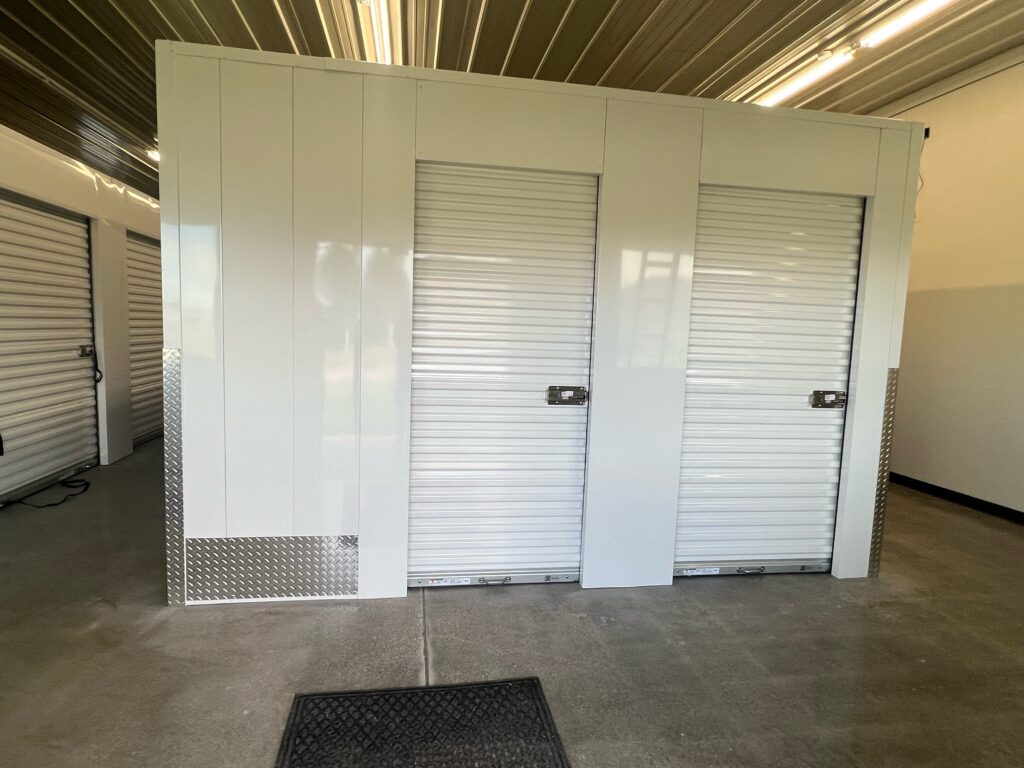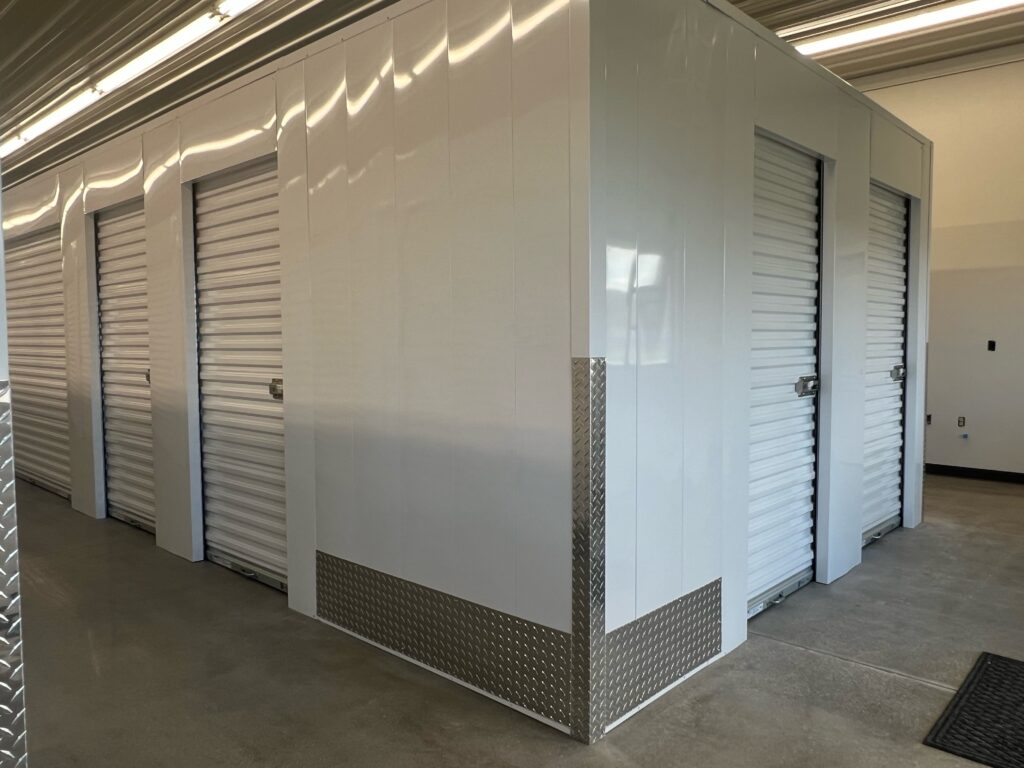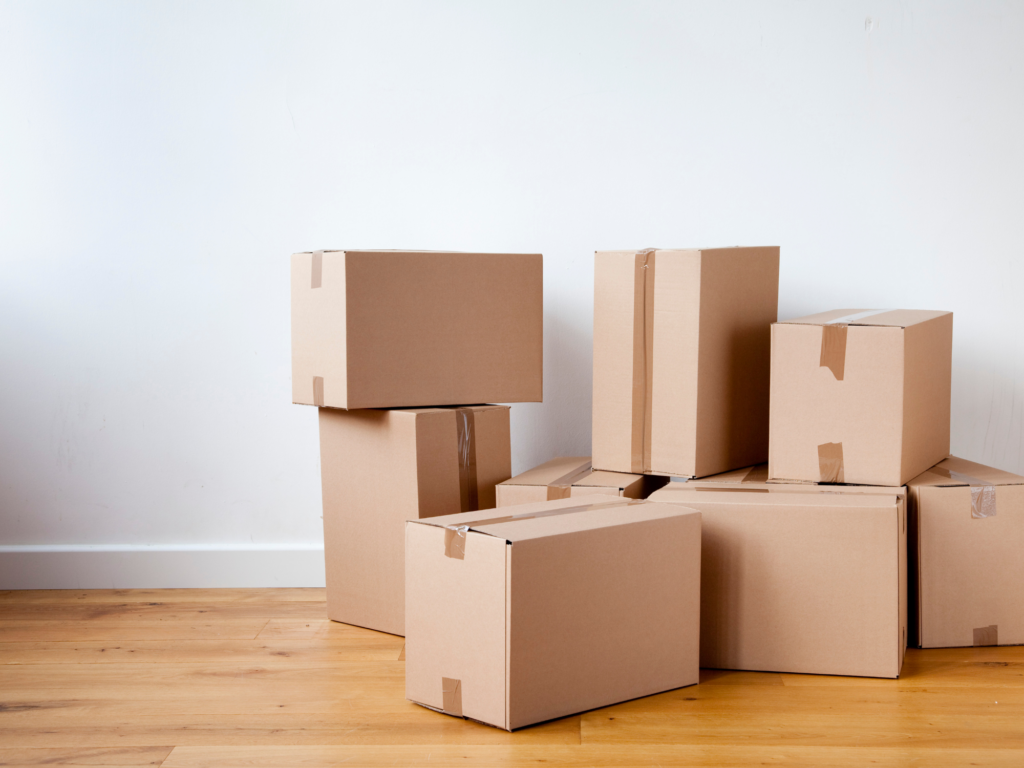How To Choose The Best Secure Storage Solutions Near You
Moving, remodeling, downsizing, or storing inventory—you need space you can trust. But with many facilities and look‑alike names, it’s hard to tell which ones are genuinely secure. Terms like “climate-controlled,” “24/7 access,” and “state-of-the-art” often mean different things from site to site, and surprises like rate hikes, weak locks, or blind‑spot cameras can put your belongings at risk.
The fix is a step‑by‑step method for comparing secure storage solutions near you. Start with your items and timeline, then match the right unit size and type. Verify security that deters theft, confirm true 24/7 access and climate control, and look for modern tech—such as keyless, app‑based entry—paired with transparent pricing, insurance options, and fair policies.
In this guide, you’ll get fifteen practical steps: how to shortlist locations, assess neighborhood safety, read reviews critically, check availability and waitlists, and tour in person or virtually. You’ll get tips for RV/boat and business storage. Whether you’re comparing a facility or a brand called Secure Storage Solutions, you’ll know how to pick the right fit.
Step 1. Clarify what you’re storing and for how long
Before comparing secure storage solutions, define exactly what goes in—and for how long. A sofa and photo albums have different needs than business files or electronics. Fragility, value, and sensitivity to heat/humidity drive climate control and stronger security. How often you’ll visit and when you’ll move in/out affects unit location and 24/7 access. A tight inventory and timeline help you avoid overpaying for space or skimping on protection.
- Inventory: Group items (furniture, documents, electronics, seasonal).
- Conditions: Note climate control, off‑floor shelving, dust covers.
- Access: Decide frequency—weekly, monthly, or rarely.
- Term: Short (<3 months), mid (3–12), long (12+); longer stays benefit most from climate control and stable policies.
Step 2. Choose the right unit size and type
Once you know what you’re storing and for how long, match your items to the right size and unit type. The right fit avoids overpaying and prevents damage from cramming. Consider visit frequency and how you’ll load. Many secure storage solutions offer ground‑floor, drive‑up, or interior climate‑controlled spaces—and modern keyless, app‑based access that makes sharing entry simple.
- 5×5: Closet-size—boxes, small decor, seasonal items.
- 5×10: Studio contents—bike, small furniture, several boxes.
- 10×10: 1–2 bedroom set—furniture, appliances, stackable totes.
- 10×15–10×20: Multi-room home or business inventory and shelving.
- Climate-controlled: Best for electronics, photos, wood, textiles, and long‑term storage.
- Drive-up vs. interior: Drive-up for bulky items and frequent visits; interior adds building layers and camera coverage.
- Keyless/app access: No lost keys, fast permissions for family, movers, or staff.
Leave a small aisle, use shelving, and confirm ground‑floor access for heavy items.
Step 3. Prioritize real security features that deter theft
Security that truly deters theft is layered—physical, digital, and procedural—and you should be able to see it in action. When comparing secure storage solutions, look for visible defenses (cameras, lighting, solid doors), controlled access that prevents key copying, and clear rules about who can be inside and when. Facilities using app‑based, Bluetooth locks alongside 24/7 video security make verification easier: you can request a quick demo and verify camera coverage in the hallways you’ll use.
- 24/7 video security: Cameras covering entrances, corridors, and loading areas—clearly visible, not hidden.
- Keyless smartphone access: App/Bluetooth entry eliminates physical keys that can be copied.
- Multiple barriers: Interior, ground‑floor units add secure doors between the street and your unit.
- Bright lighting: Consistent, motion‑activated lighting in corridors and parking for visibility and deterrence.
- Tamper‑resistant hardware: Solid doors and quality locks (disc/cylinder or integrated smart locks).
- Clean, well‑kept grounds: Working doors, tidy corridors, and prompt maintenance signal active management.
Quick checks: ask to see a live camera view, watch a staff demo of the access app, and walk your route to spot any dark corners or blind spots. If coverage or controls feel flimsy, keep shopping.
Step 4. Confirm 24/7 access and on-site convenience
Round‑the‑clock access only helps if it’s truly to your unit door—not just the gate. When comparing secure storage solutions near you, ask how you get in (smartphone keyless app or keypad), whether there are any blackout dates, and what happens if you need help after hours. On‑site convenience matters just as much: ground‑floor loading, clear paths, and tools that make move‑ins fast and safe.
- True 24/7 access: Confirm unit‑level access every day, including holidays, and ask about any exceptions.
- Access method: Test the app/keyless system or keypad code before renting.
- Ground‑floor loading: Verify wide aisles, door clearance, and short hauls from parking.
- Move‑in tools: Ask about carts/dollies and where they’re stored.
- Truck‑friendly parking: Check turn radius, loading zones, and height clearance.
- After‑hours help: Get a phone/text line for lock or access issues.
- Lighting and signage: Ensure a well‑lit, clearly marked path from entry to unit.
Step 5. Verify true climate control and environmental protections
“Climate-controlled” can mean anything from a lightly heated building to true temperature and humidity management. For secure storage solutions that actually protect electronics, wood furniture, photos, textiles, or inventory long term, verify how the environment is maintained, monitored, and backed up during outages. Ask for definitions in writing, see the equipment, and confirm what happens during extreme weather before you rent.
- Defined targets: Request written temperature/humidity targets and where readings are taken.
- Monitoring + alerts: Look for 24/7 sensors, alarms, and accessible activity logs.
- Backup power: Confirm generators or backups keep HVAC running during outages.
- Tight building envelope: Insulation, weatherstripping, and interior loading to limit exposure.
- Moisture control: Dehumidification, air filtration, and documented maintenance schedules.
- Water/pest defenses: Good drainage, sound roofing, raised thresholds, and a pest program.
Facilities that are 100% climate-controlled throughout the building make verification simpler and protection consistent unit to unit.
Step 6. Compare technology and the online rental experience
Modern tech isn’t a bonus—it’s how secure storage solutions deliver real convenience and control. Prioritize facilities that let you rent online in minutes, use your phone as the key, and manage everything from an account dashboard. Strong digital features reduce hassle on move‑in day and cut risks tied to copied keys or missing paperwork.
- Keyless access: Smartphone/Bluetooth entry with revocable digital keys for family, movers, or staff.
- Activity visibility: Access logs and alerts so you know who entered and when.
- Real‑time availability: Clear unit sizes, pricing, and promotions shown before checkout.
- Online rental + e‑sign: Complete the lease, set a move‑in date, and skip the office.
- Account management: Autopay, billing history, and easy lockout recovery.
- Security standards: MFA/2FA, verified ID at sign‑up, and privacy‑minded data practices.
- Waitlist tools: Join, get notified, and reserve quickly when your size opens.
Step 7. Build a shortlist of nearby facilities and evaluate location safety
Start with convenience, then pressure‑test safety. Build a shortlist inside your normal orbit—home, work, school—and ask how secure you’ll feel loading after dark or during bad weather. Proximity helps, but visibility and activity patterns matter more. Favor secure storage solutions on well‑lit, high‑traffic roads with clean surroundings. Don’t rely on marketing photos; verify the approach, parking, and neighbors. Whether it’s a facility named Secure Storage Solutions or another local option, judge the location first, amenities second.
- Drive‑time fit: Choose options within 10–15 minutes of your weekly routes.
- Street View scan: Check lighting, sightlines, fencing, and neighboring businesses.
- Night check: Visit at dusk to gauge lighting, activity, and any loitering.
- Approach + parking: Wide entries, clear signage, no dead‑ends, parking near doors.
- Perimeter + cameras: Controlled entries and visible cameras on approaches and lots.
- Weather readiness: Good drainage and winter maintenance; covered or interior loading.
Step 8. Understand pricing, fees, and rate-change policies
Price tags can look similar, but the true cost of secure storage solutions comes from what’s added after checkout and how often rates change. Avoid surprises by separating move‑in promos from the standard rate, and by asking how billing, fees, and increases work over the next 6–12 months—not just the first month.
- Base rate vs. total monthly: Confirm taxes, required protection, and any admin or tech/access fees.
- Promotions: Ask how long the intro price lasts and what your rate becomes afterward.
- Rate‑change policy: How often can rates change, how much notice you’ll get, and how notices are sent.
- Common fees: Admin/setup, lock or smart‑access hardware, paper billing, processing, and late fees.
- Billing + proration: Whether move‑ins/outs are prorated and if you can choose your billing date.
- Deposits + cancellations: Reservation fees, refundable deposits, and cancellation windows.
- Discounts: Prepay or multi‑month savings, military/student, or referral credits; verify online vs. in‑person pricing.
Pro tip: Run a simple total cost comparison (first‑year estimate) across your shortlist to see which option stays affordable after promos end.
Step 9. Confirm insurance and protection options
Even the best secure storage solutions can’t replace insurance. Facilities typically disclaim responsibility for your contents, so verify what’s required and how you’ll be covered. Decide whether to use your renters/homeowners policy (with a storage endorsement), buy a tenant storage policy, or opt for the facility’s protection plan. Match limits to replacement value, watch exclusions (flood, mold), and keep a photo inventory to speed any claim.
- Requirement + proof: Is coverage mandatory? What proof is accepted and how often?
- Insurance vs. protection plan: Who underwrites it, and is it a regulated policy?
- Covered perils: Confirm theft (often with forced-entry), water leaks, wind/hail; note mold/flood exclusions.
- Limits/sublimits: Electronics, jewelry, collectibles—ensure adequate replacement limits.
- Deductible + cost: Monthly price, deductible amount, cancellation and proration.
- Claims process: Needed documentation, police reports, timelines, and who you contact first.
- Vehicles/business: Separate comprehensive or commercial coverage may be required; confirm VIN/inventory specifics.
- Evidence support: Ask if access logs or camera footage can be provided to support a claim.
Step 10. Review lease terms and facility rules
The lease is where “secure storage solutions” become your lived experience—what you can do, when you can access, and what happens if something goes wrong. Read every page before you e‑sign. Pay special attention to notice requirements, access suspensions for late payment, prohibited items, and how digital/keyless access is handled for guests or movers. Clear rules protect you; vague ones create risk.
- Term and notice: Month‑to‑month vs. fixed; required move‑out notice and proration.
- Access and guests: Rules for key codes/app invites, your liability, and revoking access.
- Late/lockout/lien: When access is suspended, fees, and state lien timelines/notice method.
- Prohibited items: No hazardous materials, perishables, explosives, or living/working in units.
- Locks and alterations: Approved locks only; no door mods; smart‑lock hardware responsibilities.
- Move‑out condition: Broom‑swept, no trash; disposal or cleaning fees; cart/parking rules.
If any clause feels unclear, ask for it in writing before you sign.
Step 11. Check availability, reservations, and waitlists
Inventory changes daily, so lock in the unit size you need as soon as you’re sure. Confirm whether you’re completing an immediate online rental (unit held and ready) or just placing a reservation. If your date is flexible, join the waitlist for your ideal size and keep a backup option so your move doesn’t slip.
- Real‑time inventory: Verify the size shows “available” and not “request only.”
- Hold window: Ask how long a reservation is held with/without payment and the cancellation policy.
- Move‑in date + proration: Can you schedule ahead? Is the rate guaranteed until move‑in?
- Digital access timing: When do app keys activate, and can you test before arrival?
- Waitlist rules: Queue order, notification method, claim window, and any refundable deposit.
- Size flexibility: Options to upgrade/downgrade pre‑move while keeping promos.
- Proof: Get a confirmation email/number and screenshot the quoted rate.
Step 12. Read reviews critically and verify the brand
Treat reviews as evidence, not advertising. Filter for recent, detailed posts and look for patterns about the things that matter: security incidents (and responses), true 24/7 access, climate control consistency, app/keyless reliability, and rate changes. Also verify you’re reading about the correct company—many facilities share similar names like “Secure Storage Solutions” across different states. Cross‑check the city, street address, phone number, and website domain before you judge or book.
- Prioritize recency + detail: Mentions of cameras, lighting, app locks, and climate performance beat generic praise.
- Spot patterns: Repeated issues with access, billing, or broken doors/cameras outweigh one‑off rants.
- Inspect photos: Look for real hallways, doors, lighting, and signage—not stock images.
- Match the identity: Business name, address, and domain should align with signage and your confirmation email.
- Owner responses: Fast, specific replies signal active management and accountability.
- Red flags: Bait‑and‑switch pricing, surprise fees, frequent outages, or no staff follow‑through—keep looking.
Step 13. Account for special storage needs: RV/boat/vehicle and business
Not all secure storage solutions are built for specialty needs. Recreational vehicles and boats require larger, safer access paths and different rules than standard units, while business storage benefits from audit-ready security and truly consistent climate control. Before you reserve, match your use case to the facility’s capabilities, rules, and insurance requirements so you’re covered on day one.
- RV/boat/vehicle fit: Verify length/height limits, wide drive aisles, turn radius, and door clearances.
- Security coverage: Look for cameras on approach lanes and parking rows, bright lighting, and controlled or keyless gate access.
- Storage type: Choose indoor, covered, or open lots based on weather exposure; check drainage and snow/ice plans.
- Power & rules: Ask about 110V outlets for tenders, fluid/fuel limits, no-repair policies, and alarm sensitivity.
- Docs & protection: Registration, insurance proof, wheel locks/immobilizers, and theft‑deterrent visibility.
- Business essentials: 100% climate‑controlled interiors for inventory/files; ground‑floor loading with carts.
- Access control: Keyless, multi‑user permissions and access logs for staff/vendors.
- Scalability: Multiple units, consolidated billing, online account management, and waitlists to expand.
- Operations: Clear delivery/package policies, after‑hours access, and camera coverage along your route.
Step 14. Tour the facility or take a virtual walkthrough
Nothing replaces seeing the exact path you’ll use. Tour in daylight—and if you can—at dusk. Ask for a quick demo of the keyless, app-based access, a peek at live camera feeds, and how climate systems are monitored. If you can’t visit, request a live video call or virtual walkthrough of your hallway, loading zone, and parking so you can judge security, convenience, and cleanliness yourself.
- Loading path: Distance from parking to door; ground‑floor access; carts available.
- Camera coverage: Clear views on entrances, corridors, and near your unit door.
- Lighting: Bright, consistent illumination in lots, hallways, and entry points.
- Climate cues: Posted temp/humidity, sealed doors, no condensation or musty odors.
- Access demo: App unlocks reliably; permissions are easy to add/revoke.
- Upkeep: Clean corridors, working doors, tidy grounds—signs of active management.
Step 15. Plan move-in, set up access, and reserve with confidence
You’ve picked your spot—now make move‑in smooth and secure. Reserve online, e‑sign, enable autopay, and set up the keyless app; add temporary access for movers and test entry the day before. Stage the load, protect sensitive items, and confirm 24/7 access details so your secure storage solutions plan runs on time.
- Lock your rate: Finish the online rental, get a confirmation email, and screenshot price/terms.
- Set up access: Install the app, verify ID, test unlock; add time‑limited keys for helpers and carry a charged phone/battery.
- Plan logistics: Book your truck, confirm loading zones/parking, and reserve carts.
- Pack for protection: Use pads, plastic totes, and covers; label, and leave an aisle with heavy items low.
- Day‑of check: Bring ID and insurance proof; know your unit/route and after‑hours number; lock up and revoke helper access.
Conclusion section
Choosing the best secure storage comes down to proof, not promises. You now know how to size your unit, pressure-test real security, verify true climate control, confirm round-the-clock access, and spot total cost beyond promos. Read the lease, check insurance, and judge the location in daylight and at dusk. When a facility can demo keyless access, show live camera coverage, and document climate targets, you’ve found a partner—not just a space.
In Sioux City, you can put this checklist to work today with Keyless Storage: smartphone-enabled entry, 24/7 unit access, 100% climate-controlled ground-floor units, online rental, and continuous video security. Reserve your size in minutes, manage access for helpers, or join the waitlist. Store with confidence—and keep your time, budget, and belongings protected.





